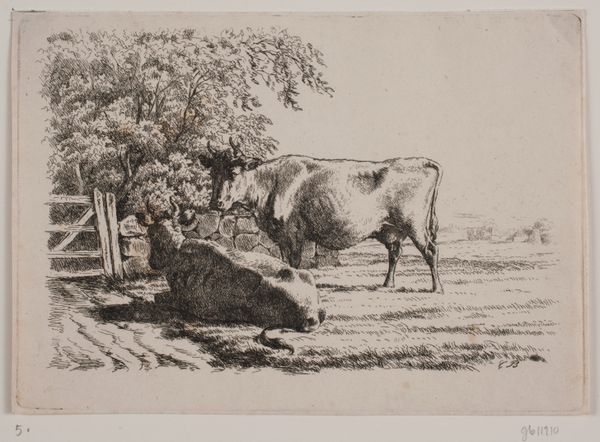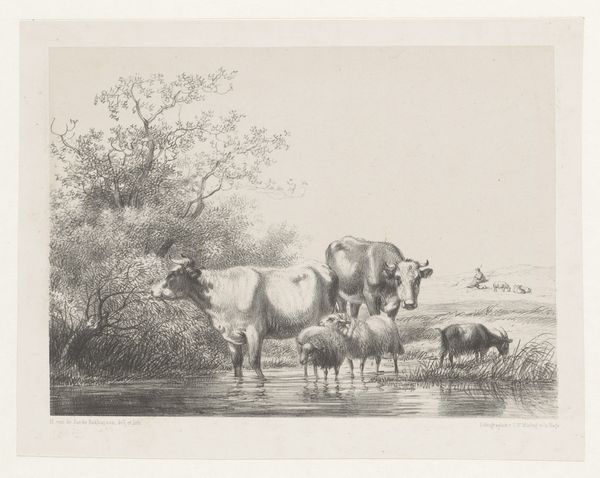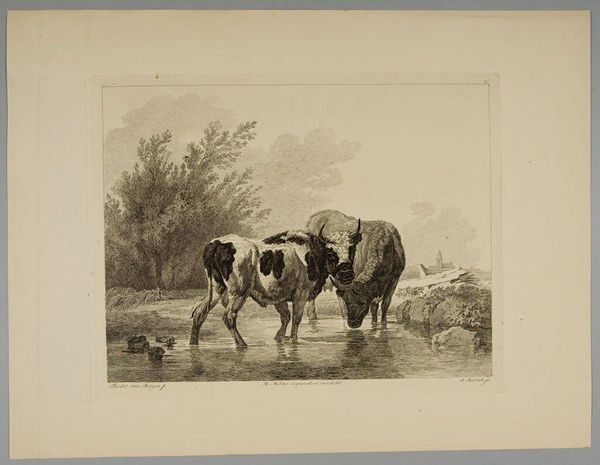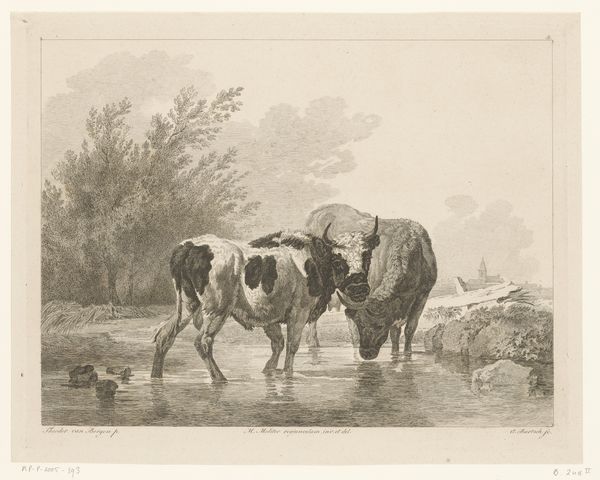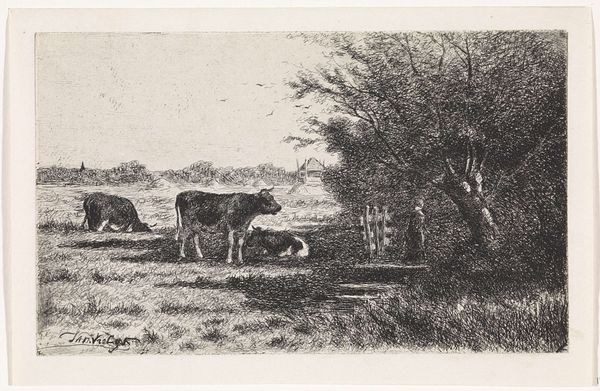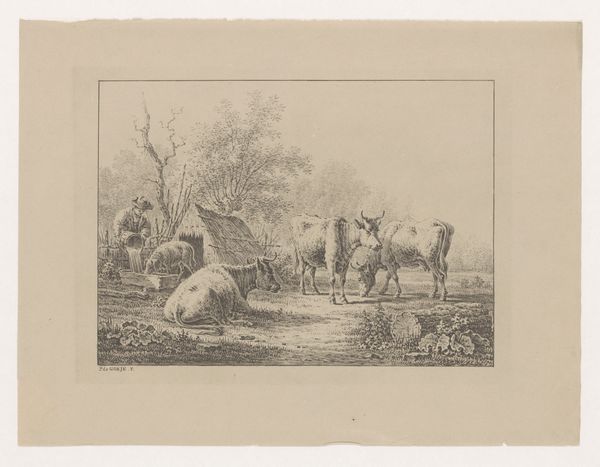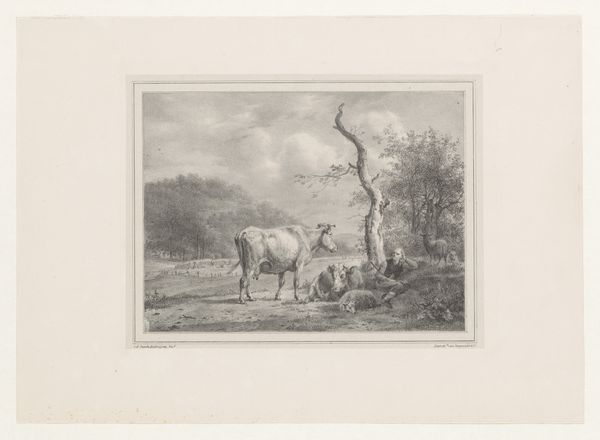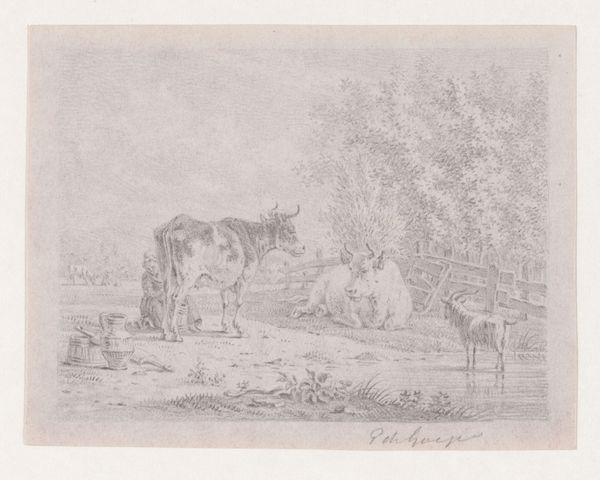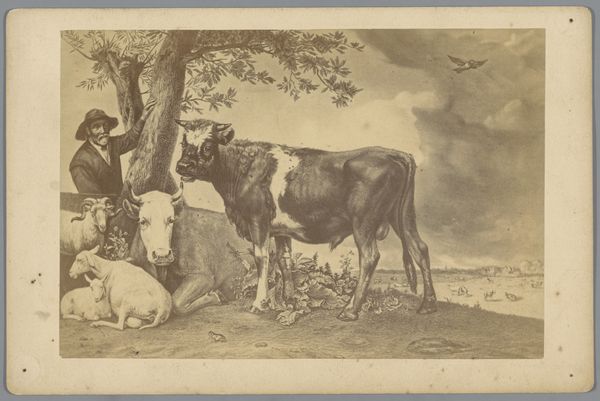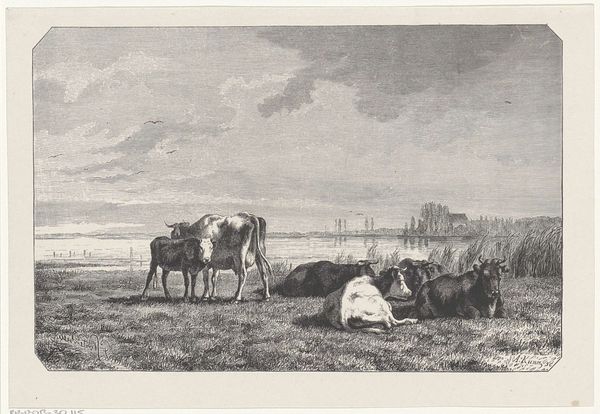
drawing, pencil
drawing
landscape
pencil drawing
pencil
genre-painting
realism
Dimensions: height 177 mm, width 228 mm
Copyright: Rijks Museum: Open Domain
Curator: We’re looking at a work entitled "Twee koeien en schaap bij het water," which translates to "Two Cows and Sheep by the Water," made between 1837 and 1853. The artist is Johannes Christiaan d' Arnaud Gerkens. It’s currently held at the Rijksmuseum. Editor: There's a gentleness to the whole scene; it's bathed in a soft, almost ethereal light. The composition, though seemingly simple, directs your gaze across the landscape very deliberately. It strikes me as an unassuming example of genre painting at its finest. Curator: Precisely. Arnaud Gerkens uses pencil here with such delicate control to describe the various textures—the fur of the animals, the water's surface, and the distant foliage. Editor: Note also the labor of rendering. Look at the fine details and ask yourself the socio-economic setting that allowed Gerkens the opportunity to practice and to perfect his craft. What was the paper made from? Who provided the materials? It opens questions on the economics of the time, the patronage system. Curator: I agree. There is something very captivating in the subtle ways he plays with light and shadow here. If we dissect this landscape formally, you see how the placement of the figures draws your eyes from foreground, where the cows drink and the sheep rests, all the way back. Editor: Speaking of those figures, isn't there also commentary at play here through his subject? These animals were crucial to rural economies. Does Gerkens celebrate agrarian ideals or simply illustrate bucolic life detached from any such intent? I find myself curious about the commission behind it. Curator: That's a fantastic point. We have to ask ourselves, is there a semiotic code embedded? Perhaps the tranquility signifies prosperity, or the specific arrangement speaks to deeper social relationships of that period. Editor: Well, whatever those specifics may have been, there's no denying that viewing artwork like this helps to understand its historical context, labor and economy. Curator: Absolutely. I find myself appreciating how, by emphasizing composition and technique, Gerkens created a narrative without needing a grand, historical subject. Editor: Agreed. To engage critically, asking ourselves "how was this artwork produced and what implications that bears?" provides deeper connection.
Comments
No comments
Be the first to comment and join the conversation on the ultimate creative platform.

